
5 minute read
Analyze & Design
ANALYSE & DESIGN
Analyses We have done done different analyzes on the geometry of the stones in order to have a better understanding of them.
Advertisement


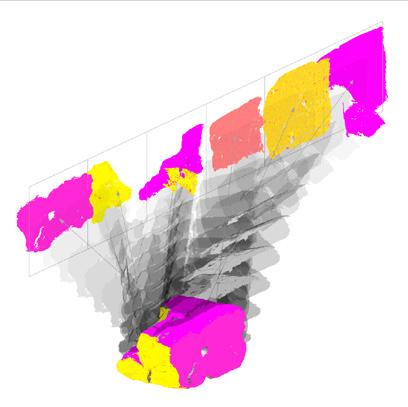
The analyses include:
• Convex and Concave Parts • Surface Devisions • Ridge Lines and Ridge Curves • Mesh Density • Roughness nad Flatness • Gripping Points • Longest Span of the Rock • Biggest Sitting Area • Stone Natural Orientation





Roughness
In order to find the roughest parts of the stone, through an optimization process using Genetic Algorithms (GA) in octo- pus -a grasshopper’s plugin- we figured out the roughest parts of the stones. Based on the standard deviation, wherever the surface is rough, it means that the number of the mesh faces are higher and thei angles are differenciate more in compari- son with the flat parts. In other words, at the roughest parts, the Normal vector of faces are more different from each oth- er.



Therefore, for this optimization, in a circumference around each node of the stone’s mesh, the angle between each mesh face in that radius and the average normal vector of all of the faces in that radius is calculated, squared, mass additioned, divided by the number of the faces and then rooted. This will give us the standard deviation of the normal vectors within that boundary. The higher the standard deviation, it means that the more differenciated the numbers are, hence it is rough.



Based On: Standard Deviation
• Parameters: Rotating The Rock Around All Axes
• Goal: Maximum Roughness
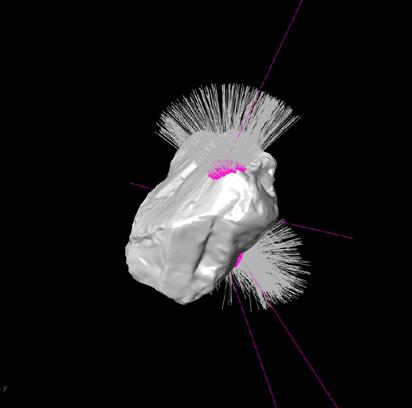



Maximum Projection Area
For the base stones, in order to find the best three points that can hold the stones as the base connection, this optimization is used. It will run through all of the points of the bottom of the rock (The relaxed orientation of the rock is calculated previously). It will take each set of three points and calculate the area of that triangle between them. The triangle with the biggest area is equal to the biggest projection of that stone from the bottom on the ground.
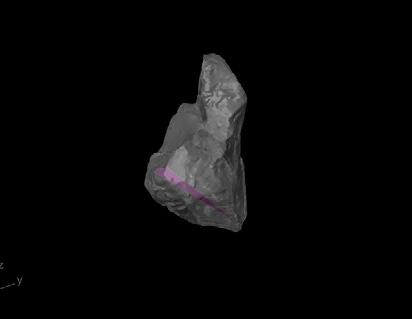
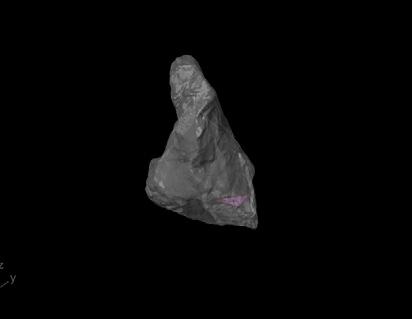




• Parameters: Points at the bottom
• Goal: Biggest triangle projection




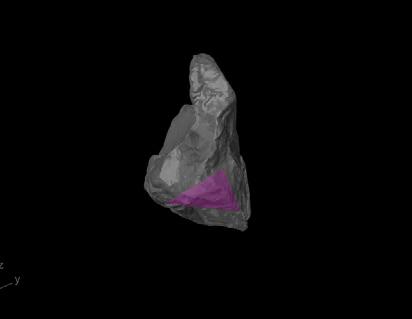
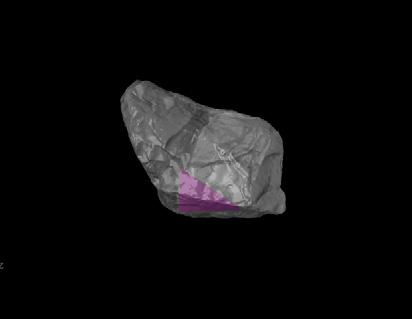
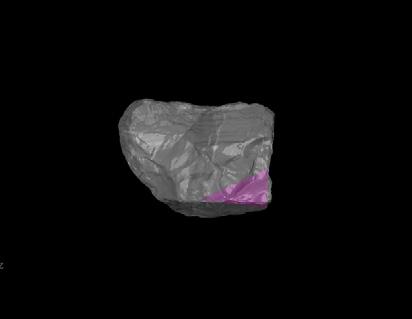
Structural Analysis
To achieve structural stability, the entire structure is analyesed using Karamba 3D. The connections are functioning as beams and the stones center’s of gravity are the nodes of the system where the loads come in.
The loads are also calculated using the density of the limestones multiplied by the volume of the meshes.
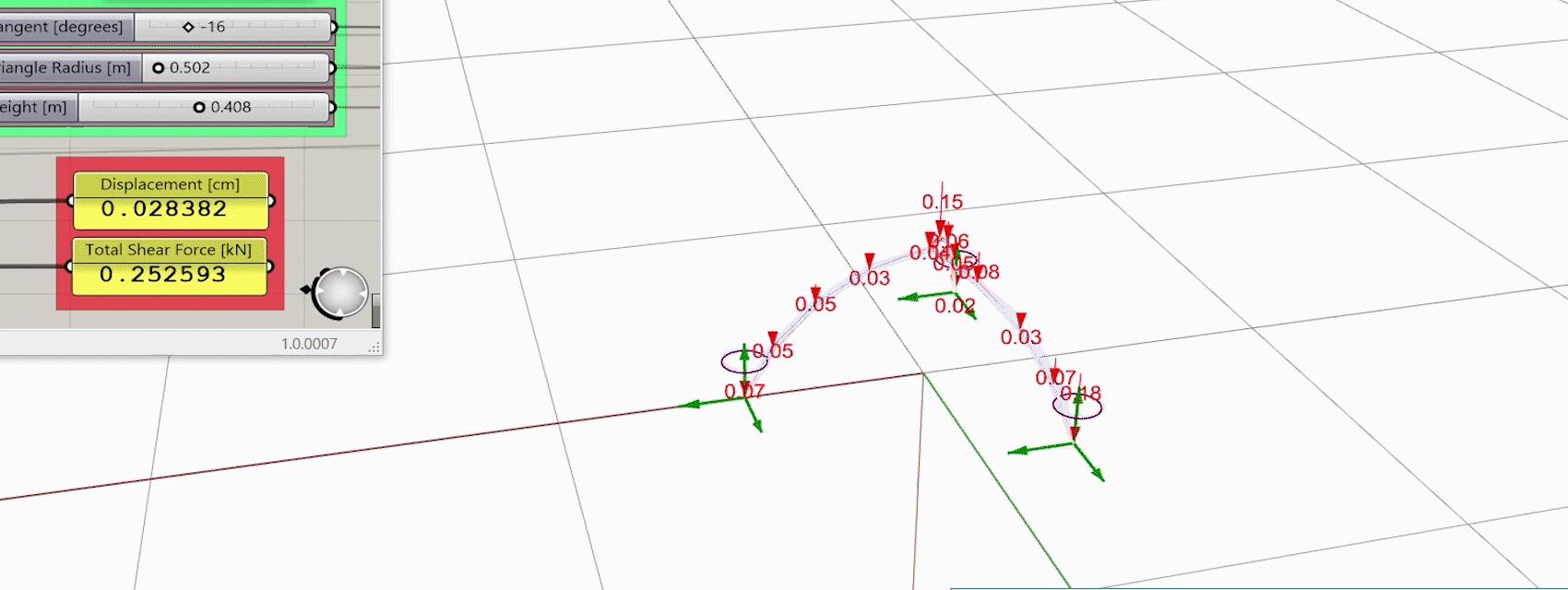
• Based On: Structural Analysis
• Parameters: Height Distance Order Curvature

Design
We had different designs throughout the year. The iterations varied from a straight column to a bench, a 3leg arch, or a bridge. In each design, we followed a different method of generating the global form and also the individual stones.





With all the analysis on the features of the rock, it was now possible to design with them. Based on the criteria, the rocks could be aligned to any shape, manipulated digitally to understand how they fit within an overall geometry.
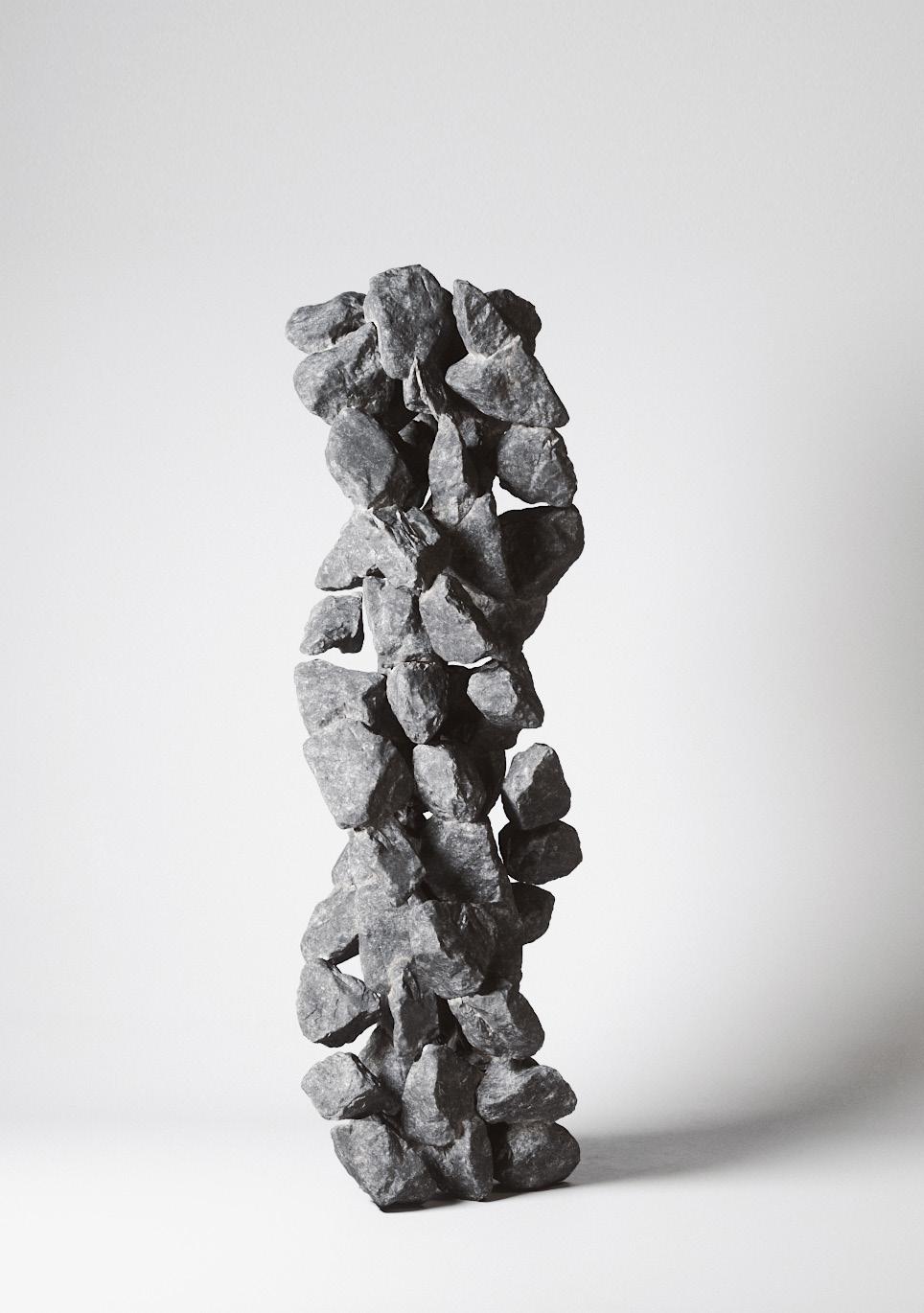

600 mm width In these trials, any designed shape can be broken down into parts that require specific performance from the rocks, such as more gripping surface or higher volume etc. The rocks, now categorised into differ- ent libraries, based on their analy- sis for flatness, roughness, volume, geometry etc can then be used to fill in the appropriate zones within that geometry.








